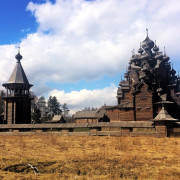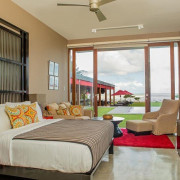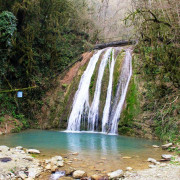Cameroon travel and information guide.»welcome to cameroun, bienvenue, to you.»
Содержание:
Культура Камеруна
- Архитектура Камеруна
- Кухня Камеруна
-
Языки Камеруна
Общий алфавит камерунских языков
- Музеи Камеруна
- Национальные символы Камеруна
- Герб Камеруна
- Флаг Камеруна
- Государственный гимн Камеруна
-
Люди Камеруна
-
Этнические группы в Камеруне
Китайцы в Камеруне
- Список камерунцев
-
Этнические группы в Камеруне
- Проституция в Камеруне
- Государственные праздники в Камеруне
- Скаутинг и гид в Камеруне
Искусство Камеруна
Искусство Камеруна
- Список камерунских художников
- Кино Камеруна
- Танцы в Камеруне
- Литература Камеруна
- Музыка Камеруна
Религия в Камеруне
- Камерун: соборы
- Свобода религии в Камеруне
- Религии в Камеруне
- Вера бахаи в Камеруне
- Христианство в Камеруне
- Евангелическая церковь Камеруна
- Евангелическо-лютеранская церковь Камеруна
- Национальная епископальная конференция Камеруна
- Православная пресвитерианская церковь в Камеруне
- Пресвитерианская церковь в Камеруне
-
Римский католицизм в Камеруне
Список римско-католических епархий в Камеруне
- Индуизм в Камеруне
- Ислам в Камеруне
Краткое описание
Первые сведения об этом древнем африканском государстве датируются 600 годом нашей эры, когда карфагенянин Ганнон совершил вдоль побережья Африки морскую экспедицию и составил первоначальную карту побережья. На ней были указаны географические координаты, широта и долгота основных мысов и обозначены все крупные реки и заливы. В 1472 году португальский мореплаватель и путешественник Руи ди Сикейра пересек экватор и высадился на побережье, где основал небольшой форт, активно торгующий с местными жителями.

Известно, что португальские моряки занимались ловлей креветок в устье реки Вури, дав ей название Рио Камаройш, что переводится как «река креветок». В последующем этот топоним трансформировался в Камерун, став названием для всей страны. В Средние века это государство часто переходило из рук в руки, принадлежав Португалии, Германии, управлялось Великобританией и Францией. Только в 1960 году Камерун получил независимость, сохранив при этом два свои официальных языка — французский и английский. Также в ходу в Камеруне язык местных жителей адамав, которые говорят на смеси суахили.
Столица Камеруна город Яунде находится в центральной части страны, являясь политическим и экономическим центром страны. Расположен этот мегаполис на плато, высота над уровнем моря которого составляет 750 метров. Численность населения столицы Камеруна Яунде составляет на сегодняшний день 3,5 миллиона человек. Второй по величине город — мегаполис Дуала. Он является одним из самых крупных портов в Гвинейском заливе.

Климат в Камеруне жаркий, на севере засушливый и субэкваториальный, на юге — влажный экваториальный. Среднемесячные температуры составляют 20—28 градусов, сухой сезон тут практически отсутствует, поэтому ежедневно идут небольшие дожди, которые в летний период могут в южных регионах превращаться в настоящие тропические ливни. В северной части Камеруна ощущается влияние находящейся неподалёку Сахары, часто тут дуют знойные жаркие северные ветра, что приводит к повышению температуры до 35—40 градусов.
В конце прошлого века в Камеруне часто происходили военные мятежи, а армия поддерживала кровавых диктаторов, которые насаждали ненависть к религиям и народностям этой страны. Лишь в девяностых годах с помощью ООН удалось провести первые демократические выборы, а страна встала на путь экономического развития. Сегодня форма правления в Камеруне — это президентская республика с абсолютной властью народа. В последние годы существенно улучшилось положение малых народностей, решены проблемы с преступностью и голодом.
Британский Камерун
Камерун 1901–1972 гг.
Герман Камерун
Британский Камерун
Французский Камерун
Республика Камерун
Территория современного Камеруна была захвачена Германией в качестве протектората во время « битвы за Африку » в конце 19 века. Германская империя названа территория Kamerun .
Мандат Лиги Наций
Во время Первой мировой войны он был оккупирован британскими, французскими и бельгийскими войсками, а позже в 1922 году Лигой Наций был выдан мандат Лиги Наций Великобритании и Франции . Французский мандат был известен как Камерун, и британская территория находилась в ведении. как две области, Северный Камерун и Южный Камерун . Северный Камерун состоит из двух несмежных частей, разделенных точкой, где пересекаются границы Нигерии и Камеруна. В 1930-х годах большую часть белого населения составляли немцы , которые были интернированы в британские лагеря с июня 1940 года. Местное население в 400 000 человек не проявляло особого интереса к добровольческой деятельности в британских войсках; только 3500 человек сделали это.
Подопечная территория
Когда в 1946 году Лига Наций прекратила свое существование, большинство мандатных территорий были реклассифицированы как подопечные территории ООН , отныне управляемые Советом по опеке ООН . Целью опеки было подготовить земли к окончательной независимости. Организация Объединенных Наций утвердила Соглашения об опеке над Британским Камеруном, который будет находиться под управлением Великобритании 12.06.1946.
Независимость
Французский Камерун стал независимым, как Камерун или Камерун, в январе 1960 года, а Нигерия должна была получить независимость позже в том же году, что подняло вопрос о том, что делать с британской территорией. После некоторого обсуждения (которое продолжалось с 1959 года), плебисцит был согласован и проведен 11 февраля 1961 года. Северный регион с мусульманским большинством выбрал союз с Нигерией, а южный регион проголосовал за присоединение к Камеруну.
Северный Камерун стал провинцией Сардауна в Северной Нигерии 31 мая 1961 года, а Южный Камерун стал Западным Камеруном, составным государством Федеративной Республики Камерун , позже в том же году, 1 октября 1961 года.
Экономика Камеруна
ВВП Камеруна 8,5 млрд долл. США, или 530 долл. на душу населения (2001). Среднегодовой прирост ВВП в 2000—02 4,73%. Структура ВВП: сельское хозяйство 44%, промышленность 20%, сфера услуг 36%. 70% экономически активного населения занято в сельском хозяйстве, 13% — в промышленности и торговле. Сельское хозяйство — основа экономики Камеруна. Главные экспортные культуры — какао (в среднем собрано в 2000—02 125 тыс. т), кофе (75 тыс. т), хлопок (90 тыс. т). Для внутреннего потребления выращиваются сорго (450 тыс. т), просо (71 тыс. т), кукуруза (600 тыс. т), рис (55 тыс. т). Поголовье скота: крупного рогатого 4,9 млн, овец — 3,8 млн, коз — 3,8 млн, ослов — 36 тыс., свиней — 1,4 млн, лошадей — 15 тыс. Улов рыбы — 80—85 тыс. т.
Получила развитие нефтедобывающая, нефтеперерабатывающая, горнодобывающая, металлургическая и лесозаготовительная промышленность (добыча нефти 5,5—6,0 млн т в год, бокситов 1,5—2,0 млн т, деловой древесины 2,5—3 млн м3, производство нефтепродуктов 1 млн т, производство алюминия в слитках 70—72 тыс. т), первичная переработка сельскохозяйственного сырья, пищевая, лёгкая промышленность.
Железнодорожная сеть имеет протяжённость 1104 км, автодороги 34300 км, в т.ч. 1288 км с твёрдым покрытием. Водные пути — 1090 км. Крупные порты — Дуала-Бонабери, Гарва, Криби, Тико. Действуют 49 аэропортов, в т.ч. 11 современного класса.
Экономическая политика направлена на реализацию приватизационных программ, которые касаются 134 предприятий, сокращение государственного аппарата и соответственно расходов на его содержание.
Бюджет (2001): доходы 2,2 млрд долл. США, расходы 2,1 млрд долл. США.
Внешняя задолженность 4,9 млрд долл. США, отчисления в счёт её погашения 12,6% экспортных поступлений (2001).
За чертой бедности живет 48% населения Камеруна. Инфляция 2,8% (2002). Безработица 30% (2001).
Внешнеторговый оборот 3,6 млрд долл. США (2000): экспорт 2,1 млрд долл. (сырая нефть и нефтепродукты, лес, какао, алюминий, кофе, хлопок); импорт 1,5 млрд долл. (машины, электрооборудование, транспортные средства, топливо, пищевые товары). Основные торговые партнёры: по экспорту — Италия (24%), Франция (18%), Нидерланды (10%); по импорту — Франция (29%), Германия (7%), США (6%), Япония (6%).
Cameroon Travel — Why You Should Visit
Visiting Douala, Yaounde, Buea, Bamenda and other cities this summer after close to a decade, presented me with some interesting challenges.
I definitely enjoyed my eight weeks stay, and yes, I will do it again at the very first opportunity. This is what made it worthwhile:
Less Traffic At Airports
Unlike JFK, EWR or most high traffic destinations, airports in this western central African nation are very relaxed.
The small sizes of Douala and Yaounde airports make for an easier, relaxed and calm travel experience.
Customs, immigration, security are all conveniently located in one area.
Spring And Summer Vacation, Year-round
Forget your heavy winter clothes. Sitting next to the the equator and GMT, Limbe, Kribi and other town’s weather conditions are either spring or summer relative to most western nations.
Beautiful year round. So plan your vacation whenever: December, March, June or September. It doesn’t matter.
Awesome Tourist Attractions, A One-Stop Tour of Africa
Sitting below the equator and a few degrees off longitude Zero, Cameroun (French) has a beautiful year-round summer-weather, gorgeous beaches such as Limbe and Kribi.
Touring from the desert north through its grassland center to its rich dense forest south, you get a true one-stop tour of Africa. For both geographers and wildlife lovers, you will find the terrain and vast variety of unique animal species in many conserved national parks.
Diversity, Cultural Diversity
With more than 250 ethnic groups in a surface area less than the size of California, you will see why a Kamerun (formerly) Travel is unique. Each ethnic group has its culture: tribal language, food, music, birth, engagement, wedding and funeral customs.
This gives this central African nation an endless array of cultural variety. Be sure to enjoy the culture of the people, especially the cuisines and music, yes, Makossa and the ever popular coupé-décalé.
Money — Excellent Currency Exchange Rates
With the current economic crisis, who wants a costly vacation? With 1USD at 400 to 500 FCFA, the greenback definitely goes a long way here . You get a lot for the «buck».

And Lots More.
The list is long. Let us know what you enjoyed most about your visit. —
About Us
My goal is to answer some of the questions I had in mind before my travel and those questions that worried my friends and family most.
This website is aimed at presenting You with up to date information. The goal is to convince You to make Cameroon your next vacation spot, or at least consider it.
Be sure to tell us about your adventures as they unfold. How was the planning? What did you enjoy most. We will love to hear your story.
Credits
New World Encyclopedia writers and editors rewrote and completed the Wikipedia article
in accordance with New World Encyclopedia standards. This article abides by terms of the Creative Commons CC-by-sa 3.0 License (CC-by-sa), which may be used and disseminated with proper attribution. Credit is due under the terms of this license that can reference both the New World Encyclopedia contributors and the selfless volunteer contributors of the Wikimedia Foundation. To cite this article click here for a list of acceptable citing formats.The history of earlier contributions by wikipedians is accessible to researchers here:
Cameroon history
The history of this article since it was imported to New World Encyclopedia:
History of «Cameroon»
Note: Some restrictions may apply to use of individual images which are separately licensed.
Do[edit][add listing]
Tours to each region of Cameroon — CamTT (www.cameroontravelandtours.com) is the local operator (the actual guides) who arranges budget tours to the region for most travel agencies.
Cameroon has 4 differents cultural areas:
– the “fan-béti” cultural area including the Regions of Centre, South and East. It is characterized by the rain forest and mostly inhabited by the beti tribe, the “bantou” people and pygmies.
– the “Littoral” cultural area including the Regions of Littoral, South- East and the division of “Ocean”(head quarter, Kribi). It’s characterized by water(the atlantic ocean) and mount Cameroon(for trekking). It’s mostly inhabited by the “sawas people”.
– the “Grassfield” cultural area, including the Regions of West and North-West. It’s characterized by it’s Kingdoms that are important artistic and cultural centers. It’s mostly inhabited by the “Bamileke” people, the “Bamoun” people and the anglophone community.
– the “Soudano-Sahelian” cultural area, including the Regions of Adamaoua, North and Far-North. It’s characterized by the Savannah landscape, and mostly inhabited by “foulbe people”.
Отдых на курорте
Отдых и туризм в Камеруне — это возможность побывать на первоклассных курортах с живописными песчаными пляжами. Ежегодно сюда приезжают тысячи туристов, которым наскучило банальное времяпрепровождение в Испании, Хорватии или Турции. В последние годы местные власти занялись развитием туристической инфраструктуры. На побережье возведены шикарные гостиничные комплексы, которые предлагают клиентам великолепный уровень сервиса. Туристы могут в Камеруне:
- понежиться на пляжах;
- съездить на увлекательные экскурсии;
- заниматься активным отдыхом.

https://youtube.com/watch?v=9w2MxknOhEg
В последние годы большой популярностью пользуется курорт Лимбе, который славится своими необычными пляжами чёрного цвета. Побережье здесь окружают кокосовые пальмы, что и делает эти места экзотическими и привлекательными для туристов. Регион в последние годы активно развивается, однако территориальная удаленность международных аэропортов несколько усложняет отдых на местных пляжах.
Большой популярностью у туристов пользуются многочисленные национальные парки, позволяющие поближе познакомиться с необычной флорой и фауной этой страны. Неподалеку от города Гаруа находятся сразу три национальных парка, которые считаются одними из лучших во всей Африке:

- Парк ля Бену.
- Парк буба Нджилу.
- Парк Фаро.
Во время такой экскурсионной поездки можно своими глазами увидеть знаменитого камерунского павиана, прайды львов, огромные стада слонов, антилоп и других экзотических животных. При желании можно остановиться в бунгало и небольших отелях, расположенных прямо в национальных парках, что позволит с головой погрузиться в необычную атмосферу, проведя несколько дней на лоне первозданной природы.
Geography
Cameroon borders Nigeria to the west; Chad to the northeast; the Central African Republic to the east; and Equatorial Guinea, Gabon, and the Republic of the Congo to the south. Cameroon’s coastline lies on the Bight of Biafra, part of the Gulf of Guinea and the Atlantic Ocean. It is the world’s 53rd largest country, comparable in size to Papua New Guinea and somewhat larger than the U.S. state of California.
Tourist literature describes Cameroon as «Africa in miniature» because it exhibits all major climates and vegetation of the continent: Coast, desert, mountains, rainforest, and savanna. The highest point is Mount Cameroon at 13,435 ft (4,095 m). Located in the southwest, it is an active volcano. The largest cities are Douala, Yaoundé, and Garoua.
Volcanic plugs dot the landscape near Rhumsiki, Far North Province.
Cameroon is divided into five major geographic zones distinguished by dominant physical, climatic, and vegetative features. The coastal plain extends 10 to 90 mi(15 to 150 km) inland from the Gulf of Guinea and has an average elevation of 295 ft (90 m). Exceedingly hot and humid, with a short dry season, this belt is densely forested and includes some of the wettest places on earth. The South Cameroon Plateau rises from the coastal plain to an average elevation of 2,130 ft (650 m). Equatorial rainforest dominates this region, although its alternation between wet and dry seasons makes it is less humid than the coast.
An irregular chain of mountains, hills, and plateaus known as the Cameroon range extends from Mount Cameroon on the coast almost to Lake Chad at Cameroon’s northern tip. This region has a mild climate, particularly on the Western High Plateau, although rainfall is high. Its soils are among Cameroon’s most fertile, especially around Mount Cameroon. Vulcanism here created crater lakes. In 1986, explosions in one of these, Lake Nyos, belched toxic carbon dioxide and killed between 1,700 and 2,000 people.
The Southern Plateau rises northward to the grassy, rugged Adamawa Plateau. This feature stretches from the western mountain area and forms a barrier between the country’s north and south. Its average elevation is 3,600 ft (1,100 m), and its temperature ranges from 72 to 77 °F (22 to 25 °C) with high rainfall. The northern lowland region extends from the edge of the Adamawa to Lake Chad with an average elevation of 980 to 1,150 ft (300 to 350 m). Its characteristic vegetation is savanna scrub and grass. This is an arid region with sparse rainfall and high median temperatures.
Cameroon has four patterns of drainage. In the south, the principal rivers are the Ntem, Nyong, Sanaga, and Wouri. These flow southwestward or westward directly into the Gulf of Guinea. The Dja and Kadéï drain southeastward into the Congo River. In northern Cameroon, the Bénoué River runs north and west and empties into the Niger River. The Logone flows northward into Lake Chad, which Cameroon shares with three neighboring countries.
Stay healthy[edit]
Yellow Fever certificates are required for travel to Cameroon.
Malaria is common, especially in the central and southern parts of the country; the risk is much lower in the mountains of the Northwest Province and the arid areas in the extreme north. Prophylactics are recommended because of the severity of some strains of malaria in the country.
Other tropical diseases are also common, including dysentery, bilharzia, hepatitis, and giardia. There are occasional outbreaks of cholera in Yaounde and Douala, but these rarely affect travelers.
There are several good-quality hospitals in the country. Most are located in Douala or Yaounde, but Kumbo has two very good private hospitals as well.
It’s highly recommended that you receive required vaccinations beforehand.
Крупнейшие города Камеруна
Яунде (Yaoundе) — столица Камеруна, а также административный центр Центрального региона и департамента Мфунди. Практически всю территорию столицы занимают районы, находящиеся вдоль центральной улицы — авеню Кеннеди, а также на примыкающих к ней холмах. Численность населения города Яунде 3 412 000 человек.
Дуала (Douala) — экономическая столица Камеруна, центр Прибрежного региона и департамента Вури. Население — 2 768 400 человек. Город Дуала расположен в западной части Камеруна, в 24 км от Атлантического океана.
Маруа ( Maroua) — одно из самых чистых поселений Камеруна. Предместье города популярно горными возвышенностями Мандара с девственными природными ландшафтами. Благодаря выгодному месторасположению город является значимым торговым центром в регионе. В округе расположены многочисленные деревушки. Их населяют племена, сохранившие доныне обычаи и традиции своих предков. Население Маруа — 340 410 человек.
Гаруа (Garoua) — город в северной части Камеруна, расположенный вдоль побережья реки Бенуэ, левого рукава Нигера.Здесь работают предприятия, деятельность которых направлена на переработку хлопка и окрашивание тканей. Население 295 580 человек.
Баменда (также известен как Абаква и Манкон) (Bamenda) — столичный центр Северо-Западной провинции. Местная экономика которого базируется в основном на деятельности предприятий, специализирующихся на переработке сельскохозяйственной продукции. Его отличительными природными особенностями являются холмистая местность и прохладный климат, несвойственный другим поселениям Камеруна. Население города Баменда 293 530 человек.
Бафусам (Bafoussam) — город на юго-западе Камеруна, а также административный центр Западного региона и департамента Мифи. Бафусам издавна является торговым центром местного народа бамилеке. Население — 290 880 человек.
Нгаундере (Ngaoundere) — административный центр провинции Адамава и департамента Вина, расположенный на плоскогорье Адамава. Местная промышленность занимается производством молочной и мясной продукции, выделкой шкур. Население — 265 750 человек.
Кумба (Kumba) — город на юго-западе Камеруна, важный региональный транспортный центр. Также Кумба является важным торговым центром. В городе производится пальмовое масло, выращиваются бананы, каучук, чай, какао. В сельскохозяйственной, строительной и лесозаготовительной промышленностях в качестве сырья используют сельскохозяйственные культуры и лесные ресурсы Население города Кумба — 165 270 человек.
Лум (Lum) — город, занимающий 10 место по численности населения в Камеруне, расположенный недалеко от государственной границы с Экваториальной Гвинеей. Населения — 135 320 человек.
Узнавай еще о Республике Камерун:
Demographics
Members of Tikar ethnic groups, such as this family, live in the Northwest Province.
2005 estimates place Cameroon’s population at 17,795,000, an estimated 41.2 percent of whom are under 15. The life expectancy is 51.16 years (50.98 years for males and 51.34 years for females).
Cameroon’s population is almost evenly divided between urban and rural dwellers. Population density is highest in the large urban centers, the western highlands, and the northeastern plain. In contrast, the Adamawa Plateau, southeastern Bénoué depression, and most of the South Cameroon Plateau are sparsely populated. People from the overpopulated western highlands and the underdeveloped north are moving to the coastal plantation zone and urban centers for employment. Smaller movements are occurring as workers seek employment in lumber mills and plantations in the south and east. Although the national sex ratio is relatively even, these out-migrants are primarily males, which leads to unbalanced ratios in some regions.
Both monogamous and polygamous marriages are practiced, and the average Cameroonian family is large and extended. In the north, women tend to the home, and men herd cattle or work as farmers. In the south, women grow the family’s food, and men provide meat and grow cash crops. Cameroonian society is male-dominated, and violence and discrimination against women is common.
Ethnic groups
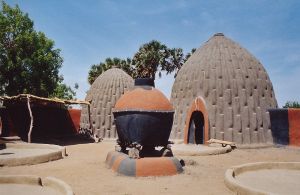
The homes of the Musgum, in the Far North Province, are made of earth and grass.
Estimates identify anywhere from 230 to 282 different ethnic and linguistic groups in Cameroon. The Adamawa Plateau broadly bisects these into northern and southern divisions. The northern peoples are Sudanese ethnic groups, who live in the central highlands and the northern lowlands, and the Fulani, who are spread throughout northern Cameroon. A small number of Shuwa Arabs live near Lake Chad. Southern Cameroon is inhabited by speakers of Bantu and semi-Bantu languages. Bantu-speaking groups inhabit the coastal and equatorial zones, while speakers of semi-Bantu languages live in the western grasslands. Some 5,000 Pygmies roam the southeastern and coastal rainforests or live in small, roadside settlements. War in the Central African Republic has driven more than twenty thousand refugees to Cameroon’s Adamawa and East provinces since 2002. Nigerians, especially Igbo, make up the largest group of foreign nationals.
Religion
Cameroon has a high level of religious freedom and diversity. The northern peoples are predominantly Muslim, although some ethnic groups retain native animist beliefs and are called Kirdi («pagan») by the Fulani. Southern ethnic groups predominantly follow Christian or animist beliefs, or a syncretic combination of the two. People widely believe in witchcraft, and the government outlaws such practices. Suspected witches are often subject to mob violence.
Languages
The European languages introduced during colonialism have created a linguistic divide between the English-speaking fifth of the population who live in the western provinces and the French-speaking remainder of the country. Both English and French are official languages. Cameroonian Pidgin English is the most common lingua franca, especially in the formerly British-administered territories. A mixture of English, French, and Pidgin called Camfranglais has been gaining popularity in urban centers since the mid-1970s.
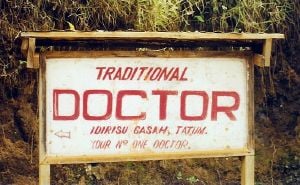
A traditional doctor advertises his services in Tatum, Northwest Province. Such healers are popular alternatives to conventionally trained doctors.
Education
Most children have access to free, state-run schools or subsidized, private, and religious facilities. The educational system is a mixture of British and French precedents, with most instruction in English or French. Cameroon has one of the highest school attendance rates in Africa. Girls attend school less regularly than boys do because of cultural attitudes, domestic duties, early marriage and pregnancy, and sexual harassment. Although attendance rates are higher in the south, a disproportionate number of teachers are stationed there, leaving northern schools chronically understaffed.
Health
The quality of health care is generally low. Outside the major cities, facilities are often dirty and poorly equipped. Endemic diseases include dengue fever, philariasis, leishmaniasis, malaria, meningitis, schistosomiasis, and sleeping sickness. The HIV/AIDS rate is estimated at 5.4 percent for those aged 15–49, although a strong stigma against the illness keeps the number of reported cases artificially low. Traditional healers remain a popular alternative to Western medicine.
Get in[edit]
| WARNING: Cameroon has closed its borders with the Central African Republic due to violence raging there. Travel within 40km of this border is not advised, nor in the border region with north-east Nigeria (Jan 2015) | |
|
Visa Restrictions:
Entry will be refused to citizens citizens of Guinea, Liberia, Nigeria and Sierra Leone, and those who recently visited those countries due to the current ebola virus outbreak. |
All foreigners, except citizens of Central African Republic, Chad, Congo-Brazzaville and Nigeria, must obtain a visa to visit Cameroon. It is very advisable to obtain it before arriving.
There any many types of visa:
airport transit visa for airport transit;
visitor visa for visiting friends and family in Cameroon;
business visas for work-relating activity in Cameroon;
tourist visa for tourism purposes;
student visa for studying abroad and learning at the universities;
employment visa for taking up work in Cameroon;
and permanent residence visa, which is issued if you a marry a Cameroonian.
What you will need to get the visa:
For all visas:
A yellow fever vaccination certificate, regardless of what country you’re from. You must also show this to the authorities at the airport once arriving in Cameroon.
The application form and 2 passport-size photographs.
The application fee (ex: In March 2021, this was USD141 for citizens of all countries except the visa waiver countries mentioned above).
Your passport with at least six months remaining before expiration.
Then, depending on whether you are requesting a Visitor Visa or a Tourist Visa, you will need:
For a Visitor Visa:
A letter of invitation (for a visitor’s visa) and a reservation confirmation from your hotel (for a tourist’s visa). If you need a visitor visa, the person you’re visiting must create the letter invitation, and get it approved and stamped by the local authorities before sending it to you. The letter must state that you have a place to stay during your trip (e.g. the home of your hosts). If you’re staying in a hotel, a hotel reservation will suffice.
OR
For a Tourist Visa:
- A consular letter from your bank stating your current balance. It must be signed by the bank for it to be valid.
- A reservation confirmation from your hotel.
Check the Cameroon Embassy website in your country of residence (or closest) for more up-to-date information. Map of embassies and other diplomatic missions of Cameroon
A tourist visa got from the Cameroon embassy in London cost £110. (2021). for overland travellers Cameroon has a embassy in Rabat, Dakar, Abidjan, Abuja, Libreville.
By planeedit
From Europe, Cameroon can only be reached via:
- Paris (Air France)
- Brussels (Brussels Airlines)
- Istanbul (Turkish Airlines)
There are several more options connecting through African cities, including though not limited to:
- Kigali (RwandAir)
- Nairobi (Kenya Airways)
- Casablanca (Royal Air Maroc)
- Addis Ababa (Ethiopian Airlines)
Sometimes airport staff try to help with the luggage in order to get extra euros/dollars from travellers.
There is also an official airport tax (10.000 CFA) for outgoing flights.
Наука и культура Камеруна
В государственных учебных заведениях введено бесплатное обучение. Высшая школа представлена 6 вузами: Государственным университетом в Яунде (основан в 1962), Институтом международных отношений Камеруна. (1971), Педагогическим институтом, Международным институтом страхования, Институтом развития, Институтом управления предприятиями. Научно-исследовательскую работу в стране курирует Генеральный комитет по научно-техническим исследованиям. Камерунская литература известна такими именами, как М.Бети, Ф.-Л.Ойоно, Ф.Бебей, Б.Ма-тип, Ф.Сенго-Куо, Э.Э.Йондо.
Больше фото Камеруна — перейти
